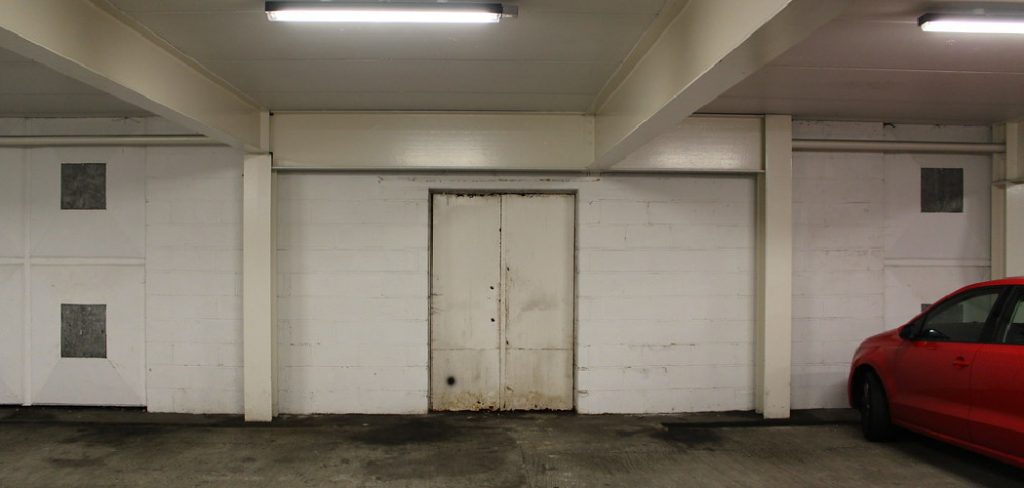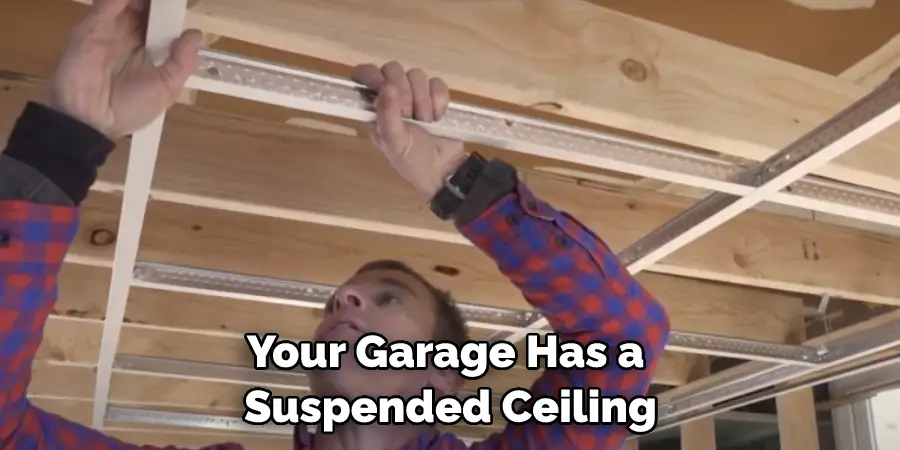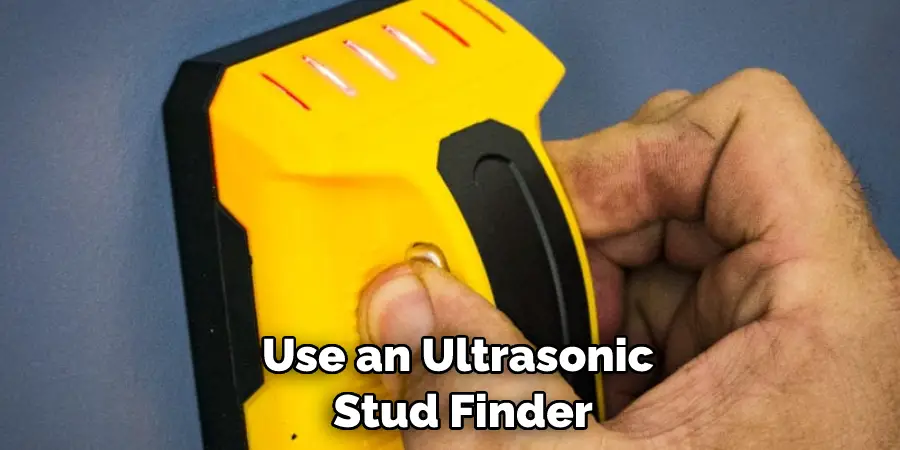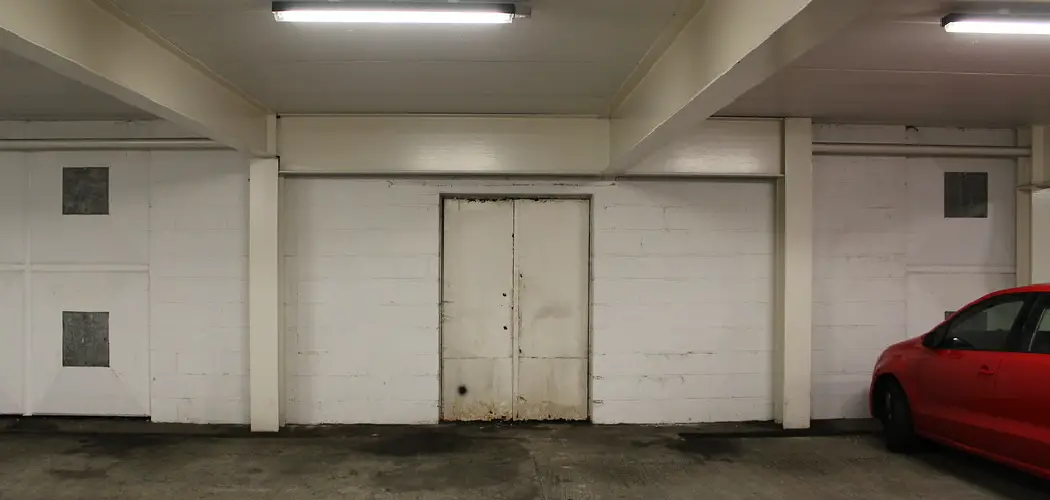When hanging heavy items in your garage, studs are important to support the weight. Knowing how to find these studs can be a real lifesaver (literally). In this blog post, we’ll teach you how to find studs in garage ceiling and show you some tips for safely hanging heavy items. Let’s get started.

Summary: When hanging heavy items from a garage ceiling, finding the studs is crucial to ensure safe and secure mounting. Using a stud finder tool can be an effective way to locate studs in the garage ceiling. If needed, a magnet can also be used to detect the nails or screws attaching the drywall to the studs.
Why Do I Need to Find Studs?
The studs in your garage ceiling are the support beams that help hold up the roof. They’re typically made of 2-by-4 lumber and are spaced 16 or 24 inches apart. You’ll need to use these studs to support the weight when you’re hanging something heavy, like a garage door opener or a bicycle lift. If you try to hang something heavy without using studs, there’s a good chance that the weight will cause the drywall or plaster to tear away from the studs, which could lead to serious damage (and possibly injury).
A Complete Guide on How to Find Studs in Garage Ceiling:
1. Look for Seams in the Drywall.
One of the easiest ways to find studs is to look for seams in the drywall. The sheets of drywall used to finish garage ceilings are usually 4 feet wide, so you’ll typically find a stud every 16 inches or so. So if you can see the seams in the drywall, measure 16 inches from one seam to the next, and you’ll find your stud.
2. Use a Stud Finder.
If you’re having trouble finding the seams in the drywall or are unsure where to start looking, you can always use a stud finder. Stud finders are small electronic devices that beep when detecting a stud behind the drywall. They’re relatively inexpensive and can be found at most hardware stores.
3. Knock on the Drywall.
Another way to find studs is to knock on the drywall. When you find a spot where the drywall sounds solid, that’s usually a good indication of a stud behind it. If you’re unsure where to start knocking, try tapping along the seams in the drywall.
4. Look for Nails or Screws in the Drywall.
If you see nails or screws sticking out of the drywall, there’s a stud behind them. This is especially true if the nails or screws are 16 or 24 inches apart. If you’re not sure how far apart the nails or screws are, you can always measure with a tape measure. This method isn’t foolproof, but it’s a good way to find studs if you’re in a hurry.
5. Look for Joints in the Ceiling.
If your garage has a suspended ceiling (i.e., a ceiling that’s not attached to the rafters), you can usually find the studs by looking for the joints in the ceiling. The panels that make up a suspended ceiling are usually 2 feet wide, so you’ll find a stud every 4 feet or so. If you’re not sure where to start looking, try following the seams in the ceiling.

6. Use a Magnet.
If you have a strong magnet, you can use it to find studs in the ceiling. Simply hold the magnet up to the drywall and move it around until you feel it being pulled towards the stud. This method isn’t foolproof, but it’s a good way to find studs if you don’t have a stud finder. You can try using a metal hanger if you don’t have a magnet.
7. Use a Flashlight.
If you’re having trouble finding the seams in the drywall, you can try using a flashlight. Hold the flashlight up to the drywall and look for shadows or cracks that might indicate the location of a stud. It’s also a good idea to scan the entire area with the flashlight before you start searching for studs. This will help you better understand where the studs are located. If you don’t have a flashlight, you can try using a penlight or a cell phone.
8. Use a Wire Coat Hanger.
If you don’t have a stud finder, you can try using a wire coat hanger. First, straighten the hanger and bend it into a “J” shape. Then, hold the hanger up to the drywall and move it around until you feel it being pulled towards the stud. If you’re having trouble finding the stud, you can try using a heavier object, such as a screwdriver.
9. Tap on the Ceiling.
You can try tapping on the ceiling if you’re having trouble finding the studs. First, listen for a solid sound, which indicates that there’s a stud behind the drywall. If you’re unsure where to start tapping, try following the seams in the ceiling. You can also try tapping along the edges of the room. If you hear a hollow sound, there’s no stud behind the drywall.
10. Feel for Rough Spots in the Drywall.
If you’re having trouble finding the studs, you can try feeling for rough spots in the drywall. These rough spots usually indicate the location of a stud. If you’re not sure where to start looking, try following the seams in the drywall. You can also try running your hand along the edges of the room.

11. Use a Laser Level.
If you have a laser level, you can use it to find studs in the ceiling. Point the laser level at the drywall and move it around until you find a spot where the laser beam is interrupted. This usually indicates the location of a stud. If you’re not sure where to start looking, try following the seams in the drywall.
12. Use an Ultrasonic Stud Finder.
If you have an ultrasonic stud finder, you can use it to find studs in the ceiling. Simply point the stud finder at the drywall and move it around until the stud finder beeps or flashes to indicate that it has found a stud.
13. Look for Changes in the Texture of the Ceiling.
If you’re having trouble finding the studs, you can try looking for changes in the texture of the ceiling. These changes usually indicate the location of a stud. If you’re unsure where to start looking, try following the seams in the drywall. You can also try running your hand along the edges of the room.
14. Use an Electromagnetic Stud Finder.
If you have an electromagnetic stud finder, you can use it to find studs in the ceiling. Hold the stud finder up to the drywall and move it around until the indicator light lights up. This usually indicates the location of a stud. If you’re having trouble finding a stud, you can try moving the stud finder around in different directions until you find one.
How Much Weight Can a Stud Hold?
The amount of weight a stud can hold depends on the wood type, the stud size, and the way the stud is attached to the Ceiling. For example, a 2×4 stud can typically hold up to 60 pounds without additional support. However, if the stud is attached to the Ceiling with nails, it can only hold up to 30 pounds. On the other hand, if the stud is attached to the ceiling with screws, it can hold up to 100 pounds.

Tips and Warnings on How to Find Studs in Garage Ceiling:
Tips:
- Inspect your garage ceiling for any signs of sagging. This could be an indication that there is a stud in that area.
- Be sure to wear gloves when searching for studs in your garage ceiling.
- Use a stud finder to help locate the studs in your garage ceiling.
- Warnings:
- Do not use an electronic stud finder on concrete ceilings, as this could damage the device.
- Be careful when standing on ladders or other elevated surfaces while searching for studs in your garage ceiling.
- Never nail or screw into a stud without first testing the area for electrical wiring. This could cause serious injury or damage to your property.
Following these tips and warnings, you can safely and effectively find the studs in your garage ceiling. Then, with a little patience and perseverance, you’ll be able to locate the studs and get started on your next home improvement project.
How Do You Hang Something Heavy From the Ceiling Without a Stud?
If you need to hang something heavy from the ceiling, but there are no studs in the area, you can use a drywall anchor. Drywall anchors are small plastic or metal devices that expand when screwed into the drywall.

This expansion creates a firm hold that can support up to 50 pounds. To install a drywall anchor, first drill a hole in the drywall using a drill bit slightly smaller than the diameter of the anchor. Next, insert the anchor into the hole and screw it into place. Once the anchor is secure, you can then screw a hook or other fastener into the anchor to hang your item.
Conclusion
So there you have it! The basics of how to find studs in garage ceiling. Now get to work on that home improvement project you’ve been dreaming about. And when you’re finished, show off your handy work by sharing pictures with us on social media. We can’t wait to see what you come up with. Good luck.

